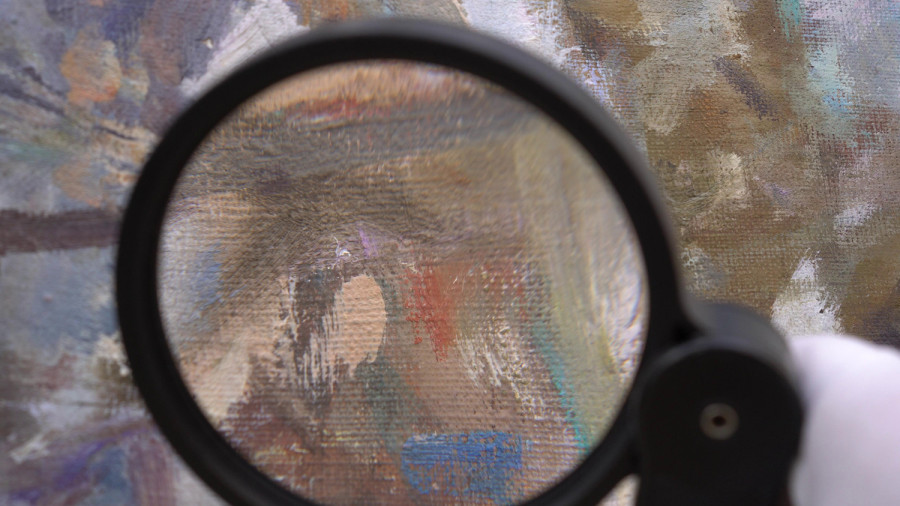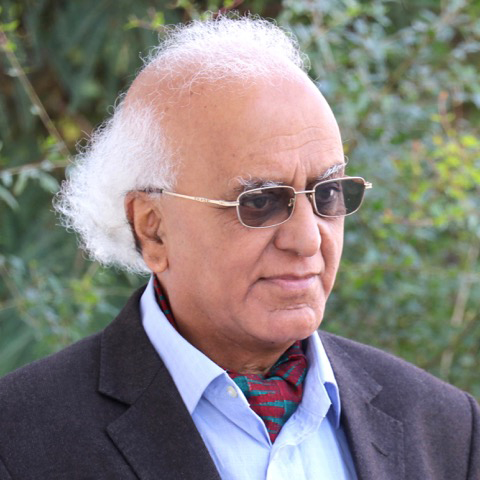Columns
Nepali art lacks serious study
The academic interest in Nepali art today calls for a need to theorise art criticism and art history.
Abhi Subedi
There have been some cases of art studies occurring in Nepal, especially in the local context. But very little has been done to theorise its study in terms of criticism and history. This struck me when I went to deliver a seminar to doctorate students of Nepali art a few months ago at the Central Department of Fine Arts, Tribhuvan University in Kirtipur. All the researchers waiting for me there were well-known Nepali artists, and included painters, sculptors, intaglio artists and a couple of students of music. (I have published articles about the works of some of the sculptors and written catalogue articles for others.) That was indeed a fascinating experience. All belonging to this diverse set were addressed under the common rubric of 'art students'. They had all come together under the programme to study courses, which would lead to a PhD. Their final work would be a dissertation on any selected subject. That would involve the analysis of primary or secondary data sources to prove their theories.
I felt that most of these students were good artists, not scholars or writers as such. But for an artist who wants to do doctorate-level research, the first requirement is that he or she should look at one's work and those of the others from a research perspective. That means they should be able to see what theoretical aspects of art would help them see their own work in the first place. In art or literature, this process is known as meta-criticism. In other words, it is the self-conscious process of studying an art object or a work of literature.
The challenge, with every student present there, was to develop this sense of meta-criticism. To know what one is doing in art is different from the satisfaction one is getting by spontaneously producing one's artwork. Therefore, I chose to encourage them to question themselves about their own works. This began to yield results. Though I did not have much time, I realised I was receiving very encouraging responses from the artist scholars. Painters talked about their techniques and the origin of that; sculptors, one of whom is very renowned, talked about the medium (stone, for example) and the stylistic variations of moulding in the sculpting process. As I was invited to just one class, I could not follow the developments. But I returned that day realising how little work has been done to theorise criticism in Nepali art and to open areas for serious academic studies in it.
As this problem begs academic questions, I would only like to allude to a few aspects of theorising art criticism in Nepal. Very little is written from such a perspective. Those who write with academic interdisciplinary methodology are few and far between. That is very natural because we have not sufficiently developed curricula in the domain of art education. The artists themselves have been taking up the cudgels to do so. But as Picasso is known to have chided a researcher, who asked him about his theory of art, by asking him in return: ‘Am I a painter or a scholar?’ The practice of an artist writing art criticism or doing serious academic work is not very common. But it can be done, by bringing the art experience under some theoretical scrutiny, which can be a self-revealing process.
But when you invite the painters, sculptors and intaglio artists to sit in a PhD class, you should address the academic problem of art pedagogy in the first place. Moreover, the programme should be open to non-artists, which is a very normal practice. One way of making it easier for artists and others to do research work leading to a PhD in art is to introduce an interdisciplinary curricula that includes theories, literature, discussions about techniques, history of Nepali art, principles of Nepali sculptures, relations between theology and art, and, very importantly, locating the importance of space and the meeting points of life and Nepali civilisations in art. That will bring artists and scholars together. As the Kirtipur experience showed to me, more serious work should be done in this area.
My first memory of meeting a meta-art critic goes back many decades. This person was no other than the maestro of Nepali drama and theatre Balakrishna Sama (1902-1981) who was also an artist. He could talk volubly about the theories of art that included paintings, sculptures and architecture. He had written a book about the modes and methods of Nepali sculptures. He was a dramatist who believed that artists should be self-conscious.
In later times, only Narayan Bahadur Singh appeared to write art criticism in Nepali. His book Samasamayik Nepali Chitrakala ko Ithihaas (1976) remained the only source of Nepali art criticism for many years; it is cited even today. But while Singh wrote history with good commentaries, he did not theorise Nepali art criticism. Lain Singh Bangdel (1924-2002) was a painter who wrote about Nepali stone sculptures and stolen images and other art issues. While writing a long article written at the invitation of Bibhakar Shakya, to go into a volume that is under production entitled Lain Singh Bangdel: His Life, Family, and Art I have found that Bangdel did not write so much about Nepali art criticism.
His daughter Dina Bangdel (1963-2017), a scholar, did that part. I find a book written by Don Messerschmidt 'with Dina Bangdel' entitled Against the Current (2004) very important from the point of view of opening up several areas of art criticism—showing where it would be important to theorise. The important thrust of this book is that any major art criticism can be best done by linking up the various related interdisciplinary subjects.
The academic interest in Nepali art today calls for a need to theorise art criticism and art history, by opening interdisciplinary fronts for that.
***
What do you think?
Dear reader, we’d like to hear from you. We regularly publish letters to the editor on contemporary issues or direct responses to something the Post has recently published. Please send your letters to [email protected] with "Letter to the Editor" in the subject line. Please include your name, location, and a contact address so one of our editors can reach out to you.




 18.12°C Kathmandu
18.12°C Kathmandu















